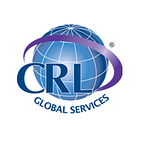The Emerging Marijuana Challenge: Δ8-THC
Marijuana testing is used by a number of life insurers in the risk assessment process. New chemical entities will make risk more difficult to predict. Read more from Drs. David Kuntz, Robert Stout and Steven Rigatti below.
Drugs of abuse testing had its formal beginning with the Federal Drug Testing Program more than 30 years ago. The initial panel covered five categories of drugs, which included marijuana, cocaine, opiates, amphetamines, and PCP. At that time, specific drug metabolites were selected for monitoring to indicate drug use. For instance, cocaine is reported based on its metabolite benzoylecgonine and marijuana based on the metabolite of Δ9-THC which is often abbreviated as Δ9-THCA. These metabolites have remained as the reportable metabolite of these drugs since the program’s inception.
There is phrase popular notion that today’s marijuana is not what was smoked in the 1960’s-1970’s by your parents and grandparents. This turns out to be true. The purity of marijuana has gone from 3% in the 1960–70’s to the 100% pure Δ9-THC extract available today. In fact, the ingestible marijuana products that were used 2–3 years ago are substantially different than what is available now. All drug programs specifically list Δ9-THCA as the compound indicating marijuana use.
But in the last couple of years, the marijuana chemists have been busy and have created a new challenge for drug testing. There is now Δ8-THC to compete against Δ9-THC.
Drug testing policies have traditionally listed the Δ9-THCA metabolite as the prohibited substance. With the legalization of marijuana and the creation of pure Δ9-THC, this offered the chemists a “clean product” that they could modify. These efforts were further expanded into the CBD products extracted from hemp, which contain < 0.3% Δ9-THC. The chemists have developed procedures which convert Δ9-THC and CBD into Δ8-THC. Δ8-THC has always been in the plant but only at insignificant amount with little to no impact to the potency of marijuana, and was ignored. Δ8-THC is approximately 50% as psychoactive as Δ9-THC but one can obtain similar effects by doubling the ingested amount.
Δ8-THC is typically sold in convenience stores, gas stations, and on the internet as an edible in candy, gummies, liquid drops, tinctures, and vaporizer cartridges. It is starting to crowd CBD products from their primary shelf space for sales.
Marijuana positivity rates continue to rise due to changes in state regulations, but employers in most states still retain marijuana as a prohibited substance in their workforce employees. It is also still federally prohibited by DHHS/DOT in their safety/sensitive positions for airline pilots, truck drivers, etc. Δ8-THC positive samples are not reported as positive for marijuana, as it is not the defined metabolite Δ9-THC. This means that an airline pilot or truck driver may be impaired but not reportable under the current drug testing guidelines.
CRL analysts noticed an increase in Δ8-THC two years ago when reviewing marijuana test results in our workplace drug testing program. At first the levels were relatively low and were of scientific interest, but not of concern. In our retrospective review of the marijuana positives, the number of samples of concern was at 0% three years ago but has grown from 4% in March 2020, to 8% in September 2020 to 18.7% in March of 2021.
CRL has brought this change in marijuana testing to DHHS/DOT and the Office of National Drug Control Policy (ONDCP) for their consideration on how to handle this new twist in edible marijuana products .It is in active review for how to control this substance and keep Americans safe in the sky and on the roads. We hope to have a response this summer in how to proceed forward for this serious safety issue.
CRL has also reviewed the marijuana results of our insurance clients and have seen a similar trend. We reviewed the results of 154 samples that screened positive for marijuana by immunoassay. Typical confirmation rates are nearly 100% with mass spectrometry methods. Out of 154 samples, 29.8% or 46 samples contained significant amounts of Δ8-THC metabolite. Of these 46 samples, 21.7% or 10 samples were positive for large amounts of Δ8-THC and reported negative for Δ9-THC. These were insurance applicant samples so the occupations for these individuals are unknown and the impact they may have on aviation and highway safety should be a concern for all citizens.
Just as we attempt to understand the impact of Δ8-THC, there is an even newer member of the THC group, Δ10-THC. This is another product of chemical manipulation, slightly less potent than Δ8-THC, but has similar effects at higher dosage levels. This is already on the market and will impact testing like Δ8-THC and will require a regulatory solution as well. There are efforts underway to purify and market other marijuana compounds such as CBN, CBC, and THCV for their reported health benefits. Time will reveal how well the public will receive them and their impacts on health and safety.
For further information on Δ8-THC, please contact your CRL sales representative.
